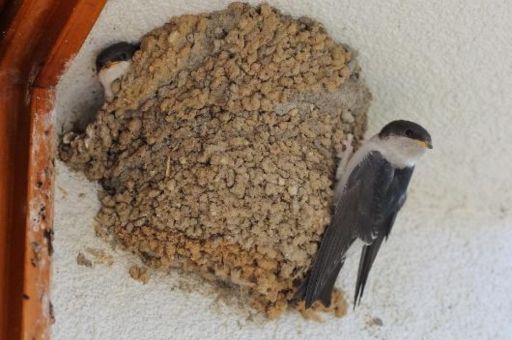These three protected species provide environmental and public health benefits by consuming disease-carrying insects
The Ministry of Agriculture, Fisheries and Natural Environment of the Government of the Balearic Islands, through the Species Protection Service of the Directorate-General for Natural Environment and Forest Management, informs that the breeding season has begun for three emblematic and protected bird species present in the Balearic Islands during spring and summer: the House Martin (Delichon urbicum), the Barn Swallow (Hirundo rustica), and the Common Swift (Apus apus). The Government reminds the public that it is strictly forbidden to remove or destroy their nests, or to intentionally disturb these birds at any stage of their life cycle. Violations can result in severe fines ranging from €3,001 to €200,000. Nest removal is only allowed under exceptional and justified circumstances with official authorisation.
TDB keeps you informed. Follow us on: Facebook, Twitter and Instagram
The Balearic Government Announces the Start of the Breeding Season for the Common Swift, Swallow, and House Martin
The Directorate-General highlights that these birds arrive in the archipelago after long migratory journeys from the African continent and settle in the Balearic Islands to reproduce. The House Martin typically nests under the eaves of homes and buildings, constructing small mud cups attached to the façades. The Swallow also builds its nest from mud, usually placing it on beams in porches, barns, and upper rooms of older houses. The Common Swift nests in holes in building walls and beneath roof tiles.
For this reason, the Government advises avoiding renovations to façades or roofs between May and August. To prevent the destruction of swift nests, roof remodelling should be avoided between May and late July, which is when chicks are left alone in the nests before departing for Africa. Swifts often nest beneath the tiles of traditional rooftops, and lifting or repositioning the tiles during the breeding season can be fatal. Sealing holes in eaves or repainting façades may also harm these birds if breeding has already begun. Likewise, removing House Martin or Swallow nests from May onward is harmful, as there are likely to be eggs or chicks inside. Destroying these nests would result in their death.
It is important to note that the House Martin, the Swallow, and the Swift are major consumers of insects. Each bird can consume thousands of mosquitoes and other small insects daily, and during the breeding season, they hunt even more to feed their young. These birds are therefore environmentally beneficial and contribute to public health by controlling insect populations that can transmit diseases.
To mitigate the inconvenience sometimes caused by House Martins or Swallows, particularly due to droppings, several solutions are available: small shelves or trays can be installed and cleaned after the breeding season, or special gutter systems connected to rainwater drains can be used for larger colonies nesting under eaves in apartment blocks or communal buildings.
Protected Species
These three bird species are protected and included in the List of Wild Species under the Special Protection Regime, by Royal Decree 139/2011 of 4 February, which regulates the List of Wild Species under Special Protection and the Spanish Catalogue of Threatened Species. They are also protected under Law 42/2007 of 13 December, on Natural Heritage and Biodiversity.
